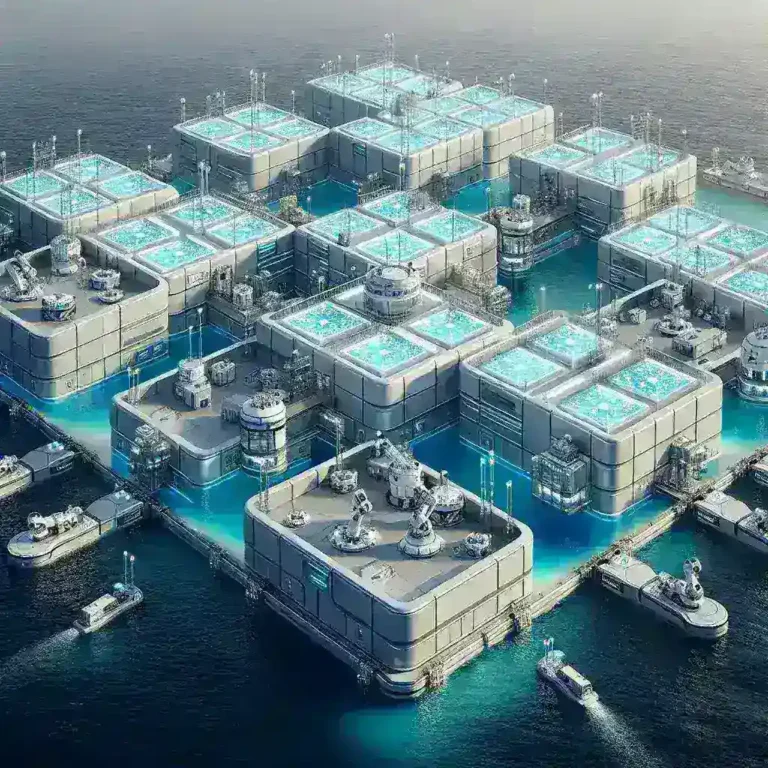Introduction
In recent years, western states in the U.S. have faced severe drought conditions, impacting agriculture, drinking water supplies, and ecosystems. As climate change intensifies, the need for innovative solutions to address water scarcity has never been more urgent. One such solution is atmospheric water harvesting (AWH) devices, which extract water from humid air, providing an alternative source of freshwater in arid regions.
Understanding Atmospheric Water Harvesting
Atmospheric water harvesting refers to the process of capturing water vapor from the air and converting it into liquid water. This technology utilizes various methods, including condensation, desiccation, and hygroscopic materials. The essence of AWH is to harness the moisture present in the atmosphere, which, despite low humidity levels, can still provide a viable water source.
How AWH Devices Work
AWH devices typically operate through one of the following mechanisms:
- Condensation: This method cools air to below its dew point, causing water vapor to condense into liquid water. This is the most common method used in AWH devices.
- Desiccation: This technique employs materials that absorb moisture from the air. Once saturated, the material is heated, releasing the captured moisture as water vapor, which is then collected.
- Hygroscopic Materials: These materials attract and hold water vapor. By utilizing low-energy processes, they can be effective in converting atmospheric moisture into usable water.
Historical Context
The concept of extracting water from the atmosphere is not entirely new. In ancient times, people used simple methods to collect dew on plants during cool nights. However, the modern development of AWH technology has gained traction in the last two decades, driven by increasing awareness of water scarcity and innovations in materials science.
Current Applications in Western States
In western states like California, Arizona, and Nevada, drought conditions have prompted local governments and private organizations to explore AWH devices as a sustainable water solution. Companies are deploying AWH systems in urban areas, agricultural fields, and remote communities where traditional water sources are scarce.
Case Studies
Several notable projects illustrate the potential of AWH technology:
- Watergen: An Israeli company that has developed portable AWH units capable of producing up to 5,000 liters of water daily. Their devices have been implemented in various drought-affected areas in California, providing essential drinking water for communities.
- Zero Mass Water: This company has introduced SOURCE devices that utilize solar energy to extract water from the air. These self-sustaining units have been installed in schools and hospitals across Arizona, ensuring access to clean water even in the driest conditions.
Pros and Cons of Atmospheric Water Harvesting
Advantages
- Sustainable Water Source: AWH devices provide a renewable water source, reducing dependency on traditional water supply systems.
- Energy Efficiency: Many AWH devices are designed to operate on renewable energy, making them environmentally friendly.
- Scalability: These devices can be deployed in various settings, from individual households to large-scale agricultural operations.
Challenges
- Humidity Dependence: The efficiency of AWH devices is contingent upon the ambient humidity levels, limiting their effectiveness in extremely dry climates.
- Initial Costs: The upfront investment for advanced AWH systems can be significant, potentially deterring widespread adoption.
- Maintenance: Regular maintenance and upkeep are necessary to ensure optimal performance, which can be a challenge in remote areas.
The Future of AWH Technology
The future of atmospheric water harvesting appears promising, with ongoing research aimed at enhancing efficiency and reducing costs. Innovations in materials science, coupled with advances in renewable energy technologies, are expected to further improve the viability of AWH as a mainstream solution for water scarcity.
Government Initiatives
State and local governments are beginning to recognize the potential of AWH technology. Incentives and funding opportunities are being introduced to support the development and implementation of these devices. Collaborations between tech companies, researchers, and policymakers aim to create a comprehensive framework for water management that includes AWH solutions.
Cultural Relevance
In regions where water scarcity has become a way of life, the introduction of AWH devices represents hope and resilience. Communities are empowered to take control of their water resources, fostering a sense of agency and sustainability. Educational campaigns highlighting the importance of water conservation and the role of AWH can further enhance cultural acceptance and integration of this technology.
Expert Insights
Experts in environmental science and water resources emphasize the crucial role of AWH devices in mitigating the impacts of climate change on water availability. Dr. Emily Waters, a leading researcher in the field, states, “As we face increasingly unpredictable weather patterns, technologies like atmospheric water harvesting will provide essential tools for communities to adapt and thrive. We must invest in these solutions now to ensure a sustainable future for generations to come.”
Conclusion
Atmospheric water harvesting devices offer a innovative approach to addressing the pressing water scarcity issues faced by western states. By harnessing the moisture in the air, these systems provide a sustainable and scalable solution to drought relief, benefiting communities, agriculture, and ecosystems alike. As technology advances and awareness grows, AWH devices could play a pivotal role in securing a more water-resilient future.













